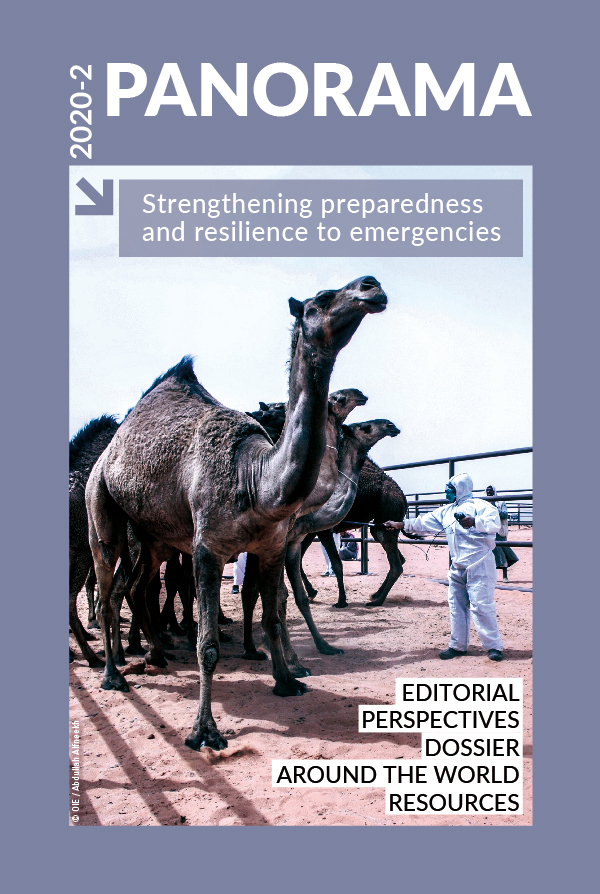Perspectives Posted on 2021-03-08 08:48:32
Opinions and strategies
Good Emergency Management Practice: The Essentials
A guide to preparing for animal health emergencies
Keywords
Authors
E. Bonbon (1)* & L. Plée (1)
(1) Food and Agriculture Organization of the United Nations (FAO).
* Corresponding author: etienne.bonbon@fao.org
The designations and denominations employed and the presentation of the material in this article do not imply the expression of any opinion whatsoever on the part of the OIE or FAO concerning the legal status of any country, territory, city or area or of its authorities, or concerning the delimitation of its frontiers and boundaries.
The views expressed in this article are solely the responsibility of the author(s). The mention of specific companies or products of manufacturers, whether or not these have been patented, does not imply that these have been endorsed or recommended by the OIE or FAO in preference to others of a similar nature that are not mentioned.
Animal health emergencies can have serious socio-economic and public health consequences. The success of emergency management systems depends on the commitment of all key decision-makers to mobilise needed resources, take rapid and relevant decisions, coordinate all mobilised national capacities, and communicate adequately to all stakeholders.
To respond to this challenge, the Emergency Management Centre for Animal Health (EMC–AH) of the Food and Agriculture Organization of the United Nations (FAO) first developed a guide in 2011, entitled Good Emergency Management Practice: The Essentials.
The Good Emergency Management Practice manual has become an international reference
The Good Emergency Management Practice (GEMP) manual describes how an animal health emergency management system should establish the elements necessary to achieve the required level of preparedness, and plan for the implementation of appropriate strategies and actions, in particular through the development of preparedness and response plans. The GEMP manual has become an international reference and is used to organise awareness and training workshops and enhance the capacities of Veterinary Services, in coordination with the relevant public health, environmental and law enforcement authorities, by taking a One Health approach. These workshops help to review countries’ experiences with animal health emergency management. They can identify key information gaps and the best strategies to address them. A format that encourages participants to take an active role and diversified sessions enable participants to learn from a range of different modules and share their in-country practices. A simulation exercise or after-action review allows participants to practise what they have learned by collaborating in small groups.
An updated version of the Good Emergency Management Practice manual is being developed
An updated version of the GEMP manual is being developed to take into account the different phases of an animal health event and the actions that should be implemented. GEMP’s scope is not confined to emergencies related to naturally occurring infectious diseases; it also covers natural disasters and the intentional use of biological pathogenic agents.
The EMC–AH aims to support all components of emergency management at the national, regional and international levels, creating a progressive pathway for emergency preparedness.












